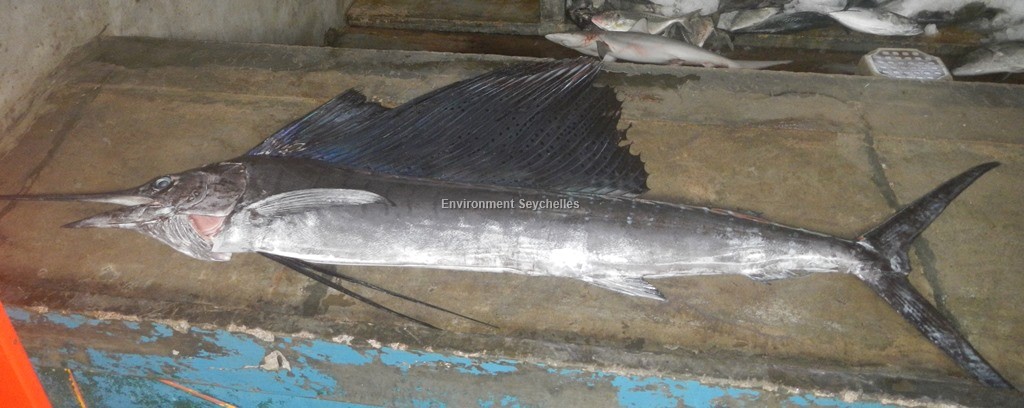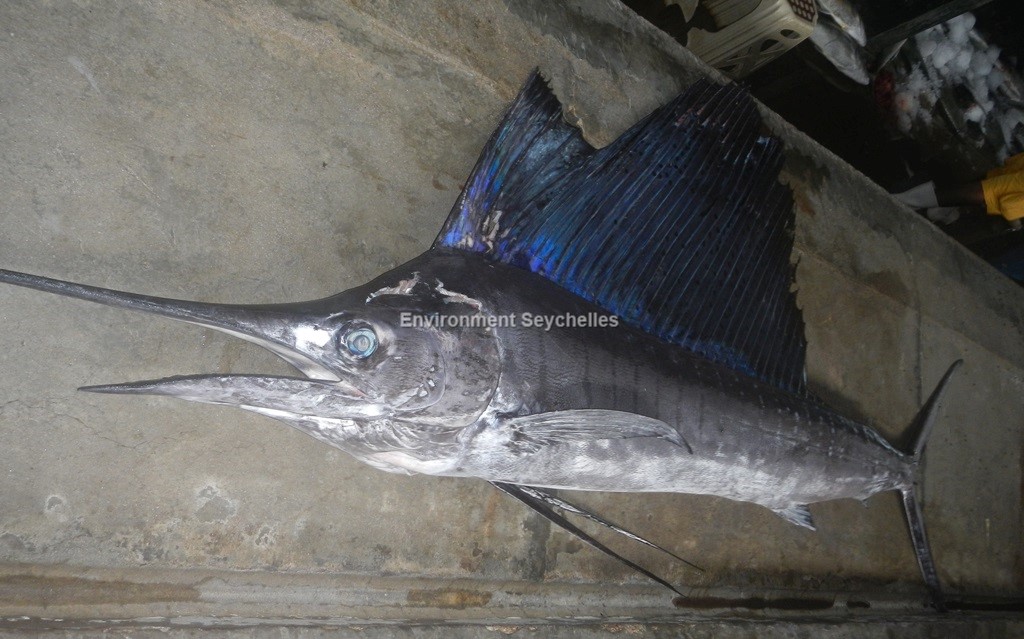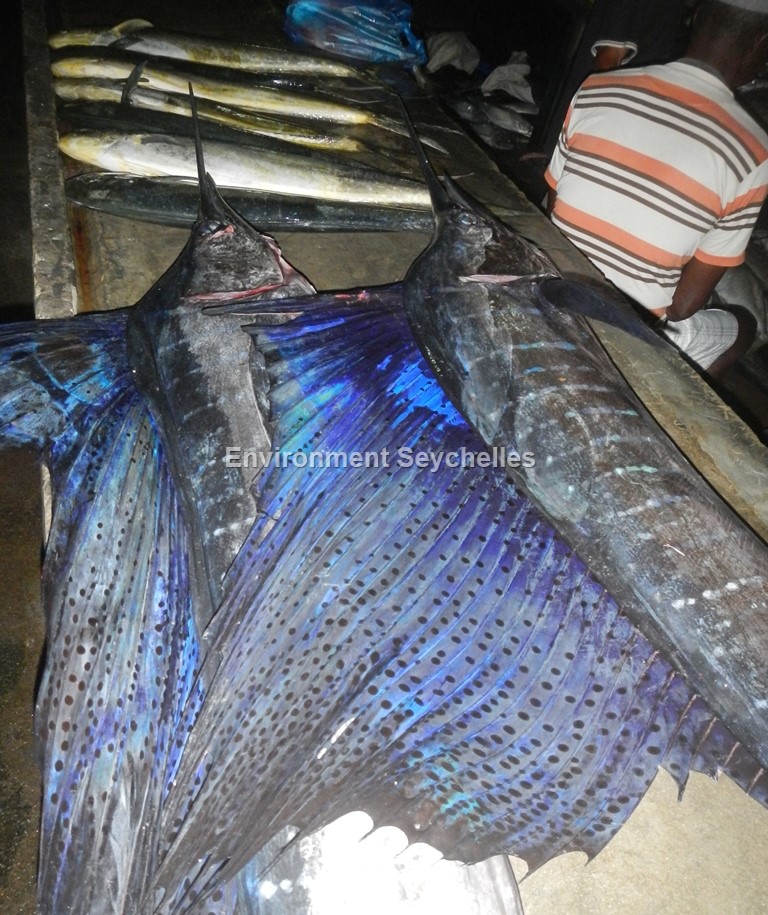Description:
Dorsal spines: 0; Dorsal rays: 47-53; Anal spines: 2; Anal rays: 12-15.
Body slender, elongate and fairly laterally compressed. Upper jaw prolonged into a very long beak, slender and round in cross-section. Jaws with villiform teeth. Two dorsal
fins. First dorsal fin high and sail-like, middle rays longest and markedly higher than greatest body depth; base long and close to that of second dorsal fin. Pelvic fins
very long and narrow reaching to anus, depressible into a groove, with 1 spine and several soft rays fused tightly together and with a well-developed membrane. Two anal fins,
the second positioned slightly anterior to second dorsal fin. Caudal peduncle with double keels on each side. Lateral line clearly visible. Body covered with small,
embedded scales.
Colour. Dark blue dorsally shading to slivery white ventrally. About 20 bluish vertical bars on flanks, each composed of many light blue round dots. Membrane of first dorsal
fin blue- black with numerous dark spots. Remaining fins blackish brown or dark blue. Bases of first and second anal fins often tinged with silvery white.
Size:
Maturity: Lm unknown. Range: ? - 150cm. Max Length: 348cm FL. Commonly to 270cm TL.
Habitat and Ecology:
Epipelagic and oceanic species, (depth 0-200m, typically 30-? m) usually found above the thermocline. Favours waters close to continental coasts, islands and reefs. Appears
to school by size, the young usually form more dense schools than adults. Feeds mainly on fishes, crustaceans and cephalopods. Spawning occurs with males and females swimming
in pairs or with two or three males chasing a single female. No external sexual dimorphism, but females grow larger than males.
Fishery Status:
This species is not protected or subject to fishery regulations. It is targeted and caught in the semi-industrial longline fishery, it is also caught by trolling in the
sports and artisanal fishery.
Notes:
References:
Collette, B. et al. (2011). Istiophorus platypterus. The IUCN Red List 2011: http://dx.doi.org/10.2305/IUCN.UK.2011-2.RLTS.T170338A6754507.en. (14/08/19).
FAO species catalogue. Vol.5. Billfishes of the World. An Annotated and Illustrated Catalogue of Marlins, Sailfishes, Spearfishes and Swordfishes Known to date.
Izumi Nakamura 1985. FAO Fisheries Synopsis No. 125, Volume 5
Froese, R. & D. Pauly. (Eds.) (2019). FishBase. https://www.fishbase.se/summary/77 (14/08/19).
Citation:
Nevill, J.E.G. (2019). Istiophorus platypterus, Indo-Pacific sailfish. Seychelles Seatizens. www.seatizens.sc. https://seatizens.sc/species/istiophorus-platypterus-shaw-1792/ (08/07/22).




There are no comments